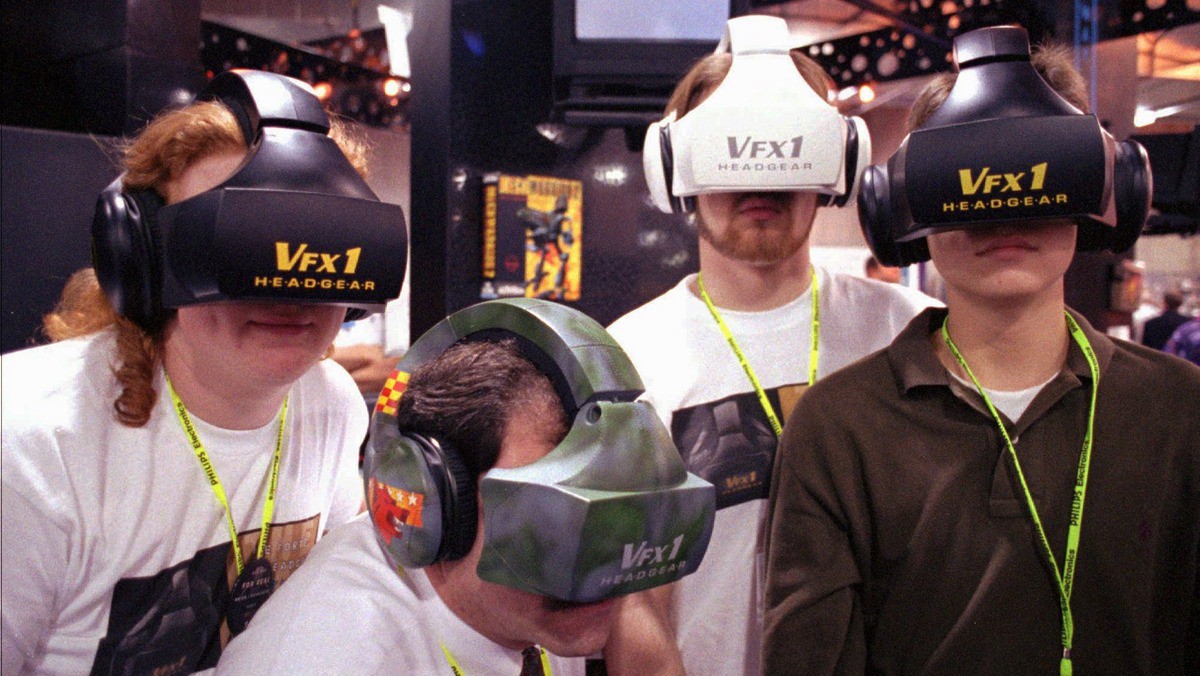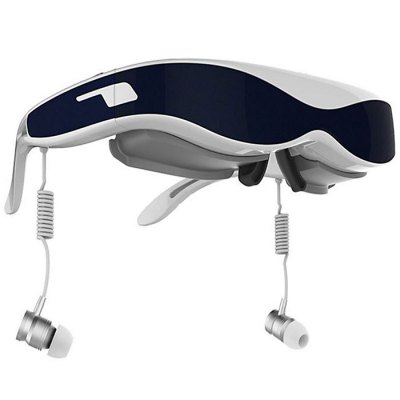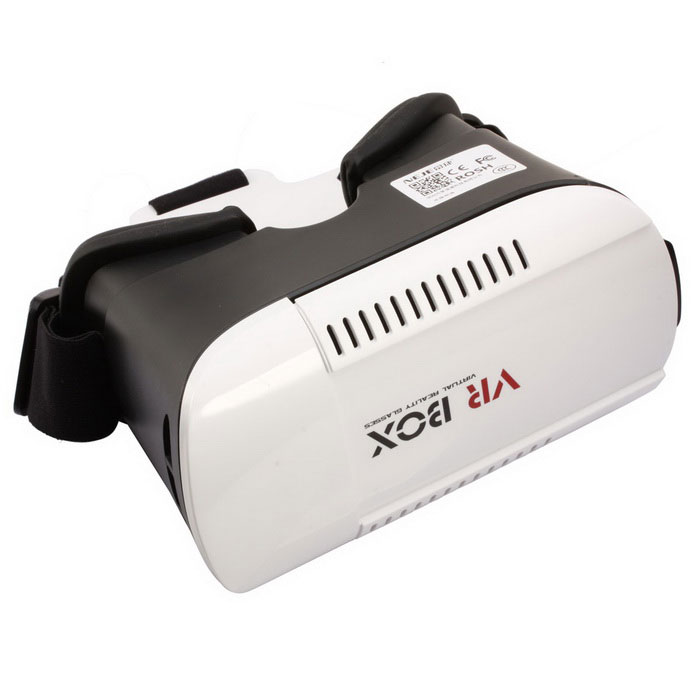Virtual, augmented and mixed reality: the essence of concepts and the history of development

In the news, there are more and more references to new devices of virtual and augmented reality. It is difficult to keep track of all this, and it is even more difficult to streamline this fragmentary information from the news. Therefore, I decided in one article to bring together all the key points concerning the industry. Indeed, in the next five years, news from this area will appear more and more often. At least, investors who invest huge sums in start-ups specializing in virtual reality think so. In addition to young enthusiasts, the largest IT enterprises also took seriously the virtual and augmented reality. But first things first…
Definitions, similarities and differences
To begin with we will be defined with terminology. Enjoying Wikipedia:
Virtual reality (Virtual Rality, VR; hereinafter - VR) is a world created by technical means (objects and subjects) transmitted to a person through his sensations: sight, hearing, smell, touch, and others. The term "virtual" comes from the lat. virtualis is possible.
')
Augmented Reality (Augmented Reality, AR, Augmented Reality, Improved Reality, etc .; hereinafter referred to as DR) is the result of introducing any sensory data into the perception field to supplement information about the environment and improve perception of information. Presumably the term itself was introduced by Boeing Corporation engineer Tom Codel in 1990. Even then, the specialists of this company fixed small digital displays on their heads, which helped them to mount the wires in the plane.
The main goal of virtual reality is to create our own digital world as close as possible to ours (at least on physical grounds), but this world is still a simulated computer (or other device), i.e. essentially a person created in a digital environment from scratch. Augmented reality only imposes elements of artificial reality on our environment. Virtual reality interacts only with the person, supplemented - also with the outside world.
In addition, they also distinguish mixed (hybrid, mixed reality, MR; further, CP) reality — the combination of virtual and augmented reality, i.e. overlaying non-existent virtual objects on our environment.
A typical example of mixed reality is the Google translator function, which translates words from one language into another in real time, immediately selecting a similar font and replacing them.
I summarize:
Augmented reality imposes auxiliary objects on our environment. Mixed reality embeds virtual objects in the environment and adjusts them. Virtual reality creates its environment, not interacting with the outside world.
History of
Let's start with the distant 1901, when the writer Frank Baum (the author of the magical country of Oz, the forerunner of television, laptops and wireless communications) spoke about the idea of an electronic display superimposed over real life.
Time passed and after 50 years the idea of Frank found its embodiment in the car "Sensorama", which now would be called an art project. The device was neither a table, nor a wardrobe with stereo images, sound, smells, a vibrating chair and other effects, but it did not arouse widespread interest and was soon forgotten.

In the early 60s, computer graphics began to appear and develop.
In 1960, Boeing specialists Vern Hudson and William Vetter create the first computer graphics systems, which are now called computer systems.
In 1962, Steve Russell, Martin Gretz and Wayne Whitane released the first Spacewar computer video game.
In 1963, American scientist Ivan Sutherland created the first graphic editor Sketchpad.
Around this time, Stanislav Lem, in one of his books, formulates and answers the question "how to create reality, which for intelligent beings living in it, would be no different from normal reality, but would obey other laws?".
In 1964, General Motors introduced the DAC-1 computer-aided design system, developed jointly with IBM.
In the same year, a group of mathematicians under the leadership of N. N. Konstantinov created a computer mathematical model of the movement of a cat. And after 4 years, the first computer animation was made of it - the BESM-4 machine, performing the written solution program.
differential equations, drew on the alphanumeric printer cartoon "Kitty" (yes, cats already captured the IT world).

And in the same 68th, it became possible to display computer images on the screen of a cathode ray tube.
Let us go back a couple of years ago and separately note another invention of the already mentioned Ivan Sutherland. In 1966, the helicopter company Bell Helicopter began developing systems for flight control at night. The systems consisted of infrared cameras and receivers located on the pilot's helmet. The direction received the name "Remote Reality" (Remote Reality). Professor Sutherland and one of his students, Bob Spolell, decided to replace the infrared receivers with electronic tubes connected to a computer, thus creating a prototype of the first video helmet.

Around the same time, in the late 60s, computer artist Myron Kruger introduced the concept of artificial reality.
After another 10 years - in 1977 - the Aspen Motion Picture Card was created at the Massachusetts Institute of Technology, a computer program that allows you to take a walk around the American city of Aspen. This program is considered the first visualization of virtual reality.
In the same year, Daniel Sandin, Richard Sayre, and a number of other EVL engineers invented a glove that could be used to transfer hand movement data to a computer. The device was named "Sayor Glove".

In 1982, Thomas Zimmerman (one of the founders of VPL Research) patented the installation of optical sensors in a glove. Zimmerman's glove was designed to combine acoustic guitar and computer and transmitted to the latter data on the position of the fingers, and the computer program has already converted the data into sound.
In 1989, virtual reality gloves finally reached the mass consumer. A device called Nintendo Power Glove has released the NES. However, it is not widely spread.
The next big leap, which had an impact on the development of BP, occurred in the late 80s and early 90s.
In 1989, another founder of VPL Research, a programmer, futurologist, philosopher, musician, and a lot of others, Jaron Lanier, actually introduces the term “virtual reality”.
In 1991, the Sega VR suite was announced, but it never reached release - the testers felt sick, dizzy, etc.
In 1994, Paul Milgrom and Fumio Kisino described a continuum of “virtuality - reality” - the space between reality and virtuality, between which are augmented reality (closer to reality) and augmented virtuality (closer to virtuality).

In the same year, the Forte VFX1 helmet goes on sale. The device is sound, but the high price and a small number of available games did not allow it to become popular.

1995 Nintendo launches the Virtual Boy game console. But she fails. The red-black image on the screen for a long time is simply impossible to watch, so the console became the first console that forced the player to take breaks so that the eyes could rest.

After that, a lot of BP helmets came out, but none of them ever became massive. In the early 90s came a lot of films and books, popularizing this industry. The topic of virtual reality was interesting and debatable. But despite this (apparently because of the loud failures of the BP's helmets), for almost 10 years no interesting developments have appeared in this area. In the 2000s, virtual reality moved into the field of computer games.
Today, a huge selection of BP glasses and helmets is on the market, which can be found as imbued with futurism ideas ( TLpower G100 * ):

It’s just “popular” glasses where you need to insert a phone - Google Cardboard VR BOX III 3 *

There is even a self- made cardboard * for 5 inch phones.

We will tell about the new stage of the development of artificial reality and about modern developments in the next article.
That's all about errors and inaccuracies found in the text is better to write in the LAN. With you there was a simple service for choosing complex Dronk.Ru equipment. Do not forget to subscribe to our blog and YouTube channel , there will be a lot more interesting.
ps * - you can return up to 5% of the purchase price by purchasing goods from these links.
Read more: dronk.ru/cashback
Our other publications:
The company Onda and its tablets - can you trust the "Chinese"?
Review of the budget 8 "Chuwi Vi8 Plus tablet on Windows 10 for $ 88
Overview of the powerful tablet Chuwi Hi10 on a full Win10 for $ 180
Seven current copters up to $ 20, which can be put in your pocket
Xiaomi company. Cheaper without damage to quality is no longer
Chuwi Ilife V5 - a $ 99 robot vacuum cleaner or how to turn daily cleaning into entertainment
NEJE engraver laser overview or promising business model
PS And we also have a smart bracelet from Xiaomi right now.
Source: https://habr.com/ru/post/390805/
All Articles